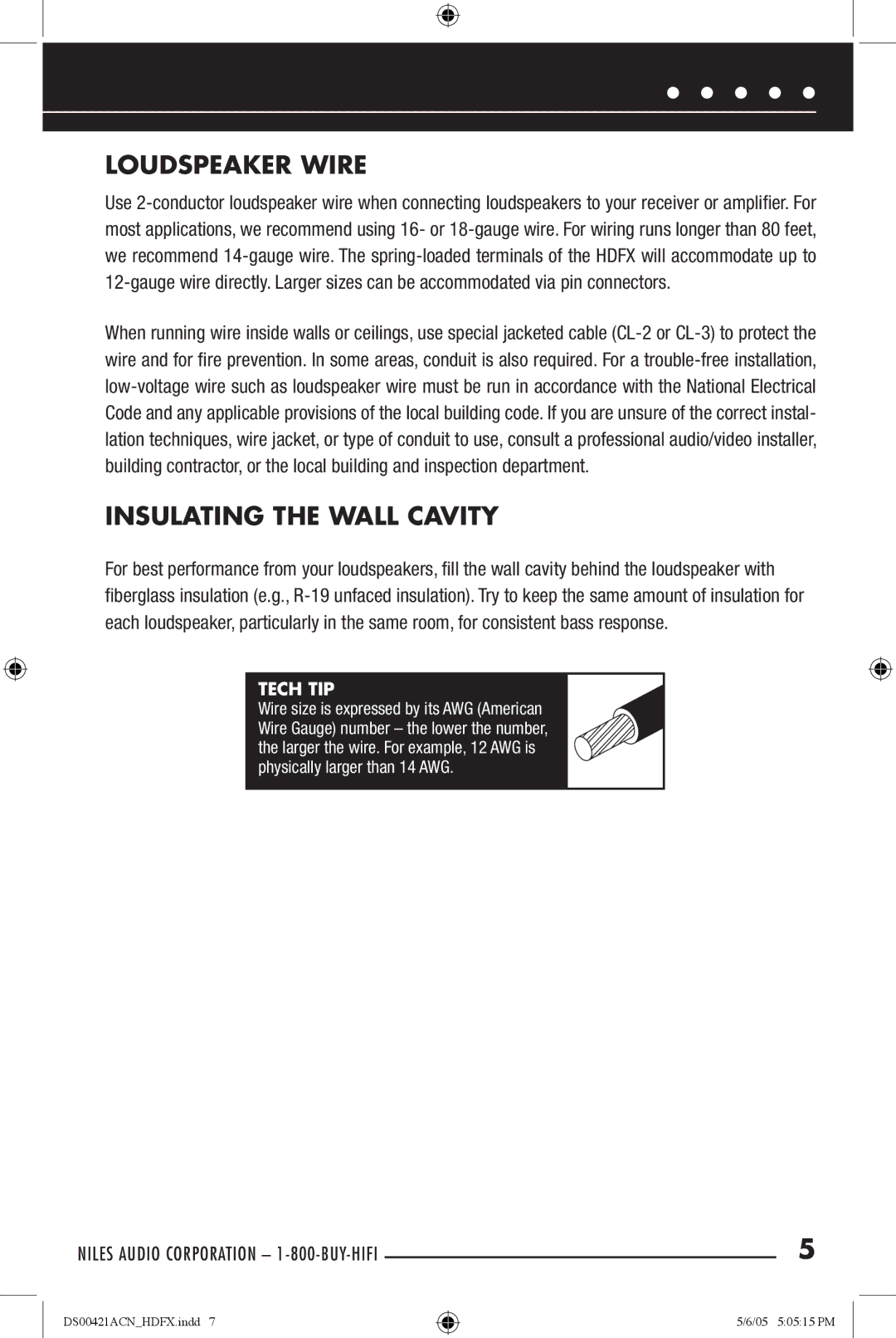
LOUDSPEAKER WIRE
Use 2-conductor loudspeaker wire when connecting loudspeakers to your receiver or amplifier. For most applications, we recommend using 16- or 18-gauge wire. For wiring runs longer than 80 feet, we recommend 14-gauge wire. The spring-loaded terminals of the HDFX will accommodate up to 12-gauge wire directly. Larger sizes can be accommodated via pin connectors.
When running wire inside walls or ceilings, use special jacketed cable (CL-2 or CL-3) to protect the wire and for fire prevention. In some areas, conduit is also required. For a trouble-free installation, low-voltage wire such as loudspeaker wire must be run in accordance with the National Electrical Code and any applicable provisions of the local building code. If you are unsure of the correct instal- lation techniques, wire jacket, or type of conduit to use, consult a professional audio/video installer, building contractor, or the local building and inspection department.
INSULATING THE WALL CAVITY
For best performance from your loudspeakers, fill the wall cavity behind the loudspeaker with fiberglass insulation (e.g., R-19 unfaced insulation). Try to keep the same amount of insulation for each loudspeaker, particularly in the same room, for consistent bass response.
TECH TIP
Wire size is expressed by its AWG (American Wire Gauge) number – the lower the number, the larger the wire. For example, 12 AWG is physically larger than 14 AWG.
NILES AUDIO CORPORATION – 1-800-BUY-HIFI
DS00421ACN_HDFX.indd 7

